_Location: Sunset Park, Brooklyn, New York, USA
_Company: terrain-nyc | www.terrain-nyc.net
_Collaborators:
Civil | Brooker Engineering
Irrigation Consultant | Northern Designs
Structural Engineer | Daniel Wapner, P.E., PLLC
MEP Engineer | CFS Engineering
Arborist | Urban Arborists Inc
Soils Consultant | James Urban, FASLA
Site Furniture Fabricator | Sitecraft
Metal Fabricator | ATH Studios
_Clients: Industry City Associates
_Contractors: Todd Group
_Size: 36,000 sq ft
_Year completed: 2016
_Text credits: terrain-nyc
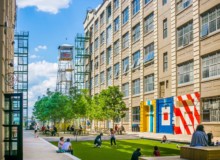
Sunset Park, Brooklyn, NY, USA
Photo: Industry City
Tags in this photo:
Art, Artificial turf, Color, Tree groves
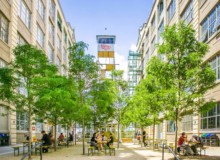
Sunset Park, Brooklyn, NY, USA
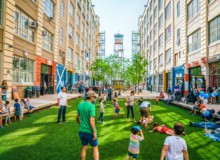
Sunset Park, Brooklyn, NY, USA
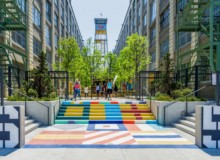
Sunset Park, Brooklyn, NY, USA
Photo: terrain-nyc
Tags in this photo:
Color, Graphics, Signage, Steps, Tree groves
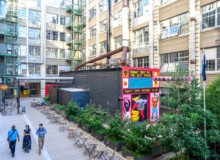
Sunset Park, Brooklyn, NY, USA
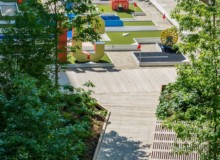
Sunset Park, Brooklyn, NY, USA
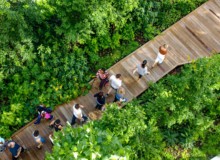
Sunset Park, Brooklyn, NY, USA
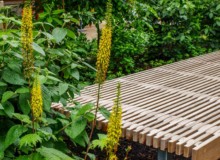
Sunset Park, Brooklyn, NY, USA
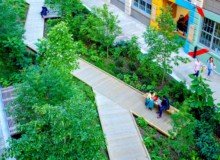
Sunset Park, Brooklyn, NY, USA
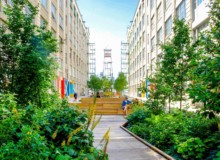
Sunset Park, Brooklyn, NY, USA
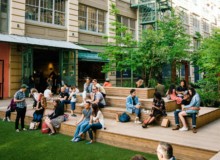
Sunset Park, Brooklyn, NY, USA
Photo: Industry City
Tags in this photo:
Art, Artificial turf, Benches, Terraces, Wood, Wood decking
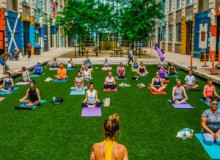
Sunset Park, Brooklyn, NY, USA
Photo: Industry City
Tags in this photo:
Art, Artificial turf, Sports and Games, Wood, Wood decking
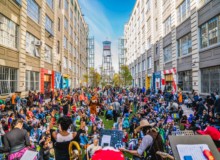
Sunset Park, Brooklyn, NY, USA
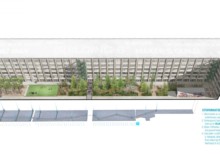
Sunset Park, Brooklyn, NY, USA
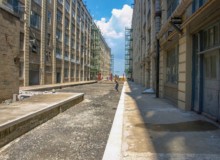
Sunset Park, Brooklyn, NY, USA
Project Description
Industry City is an aggregation of over 400 companies focused on craft and innovation. Terrain’s courtyard, one of 4, is dramatically set in the former Bush Terminal Industrial Campus- the nation’s first vertical factory. The courtyards, formerly railroad loading docks which delivered goods to the stacked warehouses and factories, are now a public gesture towards the community and the tenants of over 6 million square feet of workspace. Courtyard 5-6 is the third and most diverse conversion. Situated between sublimely scaled 600 foot long buildings, the design offers visitors and tenants a mix of: forested respite from the industrial site, games and flexible areas, an active turf area for play, recreation, spectating bleachers for films and events, and a shaded grove of trees equipped with loose tables, wi-fi and flanked by beer gardens.
Lush forest walkways planted with natives offer a connection to nature in a context devoid of greenery and offer a year-round spectacle to workers in the windows above.
A storm-water management strategy infiltrates water on site and reduces the risk of CSOs (combined sewer overflows), designed to manage up to two inches or rain per hour. Underground perforated detention pipe and a 6” deep gravel bed hold up to 50,000 gallons of rain (2” of rain per hour). Water infiltrates on site into the well-draining base and is returned to the ground water aquifer. Only after runoff exceeds the rate of 50,000 gallons or 2” per hour, it is released, delayed, via an emergency overflow outlet to the city sewer, thus reducing the burden on the sewer system and decreasing the likelihood of CSO occurring.
Sustainable materials were used including recycled aggregate paving, EPP certified local lumber, and 100% recycled content turf. The robust planting is predominantly native and treats the site’s subsoils.





